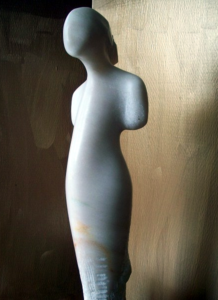Published. Article on Movement Disorders and Vagal Tone
Kristen Sparrow • February 18, 2017


Here is a link to the article coming out in February. Unfortunately, it’s behind a paywall. It will appear in Alternative and Complementary Therapies. The article looks at stress response and vagal tone in two patients with movement disorders. One patient has cervical dystonia, and the other has intentions tremor.
Acupuncture and Vagal Tone: Cervical Dystonia and Intention Tremor
Patients with functional movement disorders have lower vagal tone than controls1 according to a recent study. Lower vagal tone is associated with worse health outcomes in a variety of conditions2,3 and correlates with poor mood, sleep, pain levels, immunity, and Self Rated Health.4 Acupuncture may improve vagal tone over time as measured by heart rate variability (HRV).5,6 Furthermore, there is some evidence that an improvement in HRV correlates with clinical improvement.7 There are many aspects of HRV to explore in conjunction with Acupuncture treatment from best needling protocols, to most relevant HRV parameters, to related modalities such as transauricular vagal nerve stimulation. Presented here are two cases examining HRV and clinical outcomes.
Patient 1: 60 y.o. female nurse with disabling cervical dystonia characterized by stiffness, pain, and involuntary “pulling” of her head. Wanting to avoid further Botox injections, she sought acupuncture treatment. Points were used for vagal enhancement[1] and TH15 for neck pain. Though the Acupuncture helped her sleep better and improved her overall wellbeing, she still requires periodic Botox injections. Her clinical improvement is only partial. Her HRV has dramatically improved over the months of her weekly or biweekly treatments, however. Initially her overall HF (HRV measure of vagal tone) was .25 (low). 6 months later her HF was .71 (very high).
Patient 2: 75 y.o. female retiree with mild to moderate intention tremor. Points were chosen for vagal enhancement and local points for hand tremor. She improved within 6 treatments, her tremor now rare. Though the patient has continued treatment for over one year there has been no significant increase in her HF over time as was the case in Patient 1 .
These case studies illustrate two Acupuncture clinical outcomes treating movement disorders, but do not support the hypothesis that clinical improvement necessarily correlates with improved HRV .
References
- Maurer CW, Liu VD, LaFaver K, et al. Impaired resting vagal tone in patients with functional movement disorders. Parkinsonism Relat Disord 2016 Sep;30:18-22.
- Giese-Davis J, Wilhelm FH, Tamagawa R, et al. Higher vagal activity as related to survival in patients with advanced breast cancer: an analysis of autonomic dysregulation. Psychosom Med 2015 May;77(4):346-55
- Pellissier S, Dantzer C, Mondillon L, et al. Relationship between vagal tone, cortisol, TNF-alpha, epinephrine and negative affects in Crohn’s disease and irritable bowel syndrome. PLoS One 2014 Sep 10;9(9)
- Marc N. Jarczok, Marcus E. Kleber, Julian Koenig,,et al. Investigating the Associations of Self-Rated Health: Heart Rate Variability Is More Strongly Associated than Inflammatory and Other Frequently Used Biomarkers in a Cross Sectional Occupational Sample. PLoS One 2015 Feb 18;10(2)
- Mehta PK, Polk DM, Zhang X, et al. A randomized controlled trial of acupuncture in stable ischemic heart disease patients Int J Cardiol 2014 Sep 20;176(2):367-74.
- Sparrow K, Golianu B. Does Acupuncture Reduce Stress Over Time? A Clinical Heart Rate Variability Study in Hypertensive Patients Med Acupunct 2014 Oct 1;26(5):286-294.
- Bäcker M, Grossman P, Schneider J, et al. Acupuncture in migraine: investigation of autonomic effects. Clin J Pain 2008 Feb;24(2):106-15.
Kristen Sparrow, MD
Private Practice
2000 Van Ness Avenue Ste 310
San Francisco, CA 94109
ksparrowmd.com
415.775.0117
collinssparrow@cs.com
- [1] Points varied but included PC6, Ht7, St36, Sishencong, Yintang , auricular points

